Prague: At War and at Peace
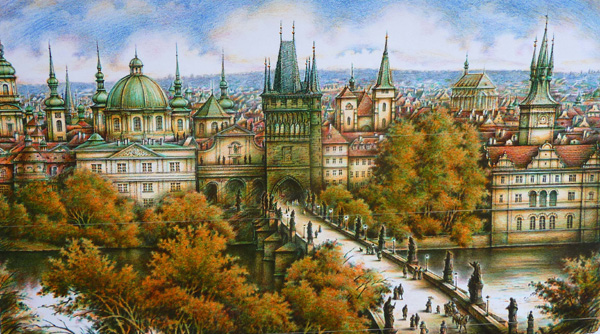
Photo from Painting
View of the Charles Bridge looking toward the main city centre. Paintings, sketches and drawings, such as the one above, depict various scenes around the city. Many are the work of talented young people trying to make their way in life. For a small donation, the artist allows pictures to be taken.
What ever direction you might travel in Eastern Europe, a few days in Prague is a must. For Esther, Garth, Lynn and I, a four day extension of our Danube trip was barely enough, however we did manage to savour every last second. We would have gladly stayed for another week just to touch upon the many things that still awaited our eager senses but, alas, time (and booked flights) conspired against our wishes. For other travelers we highly recommend a minimum of one week, perhaps ten days if you can squeeze out the time. A three month stay in Prague and the surrounding country would be heaven.
As with many cities and countries in Eastern Europe emerging from thirty five years of war (World War I and II), then forty-one years of communism, peace comes with a cost, but that cost seems worth every penny in hard cash, blood, sweat and tears. Around the world we see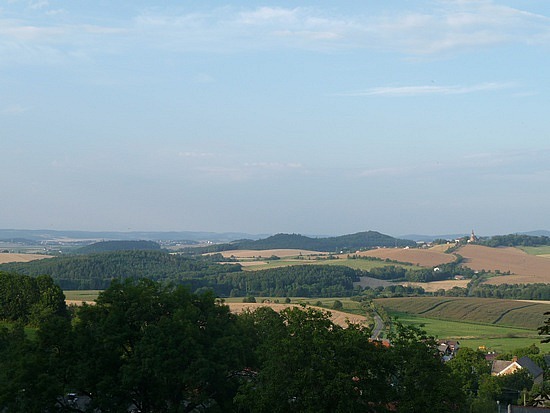 these costs being paid everyday for a small taste of that elusive dream we call freedom. (Reference Footnote on Quebec Student Protests).
these costs being paid everyday for a small taste of that elusive dream we call freedom. (Reference Footnote on Quebec Student Protests).
Photo (Web): This is typical of the foothill farm country through which we passed. Many of the farms along the highway had seen better times.
Our four hour bus trip from Passau, Germany then across the southern Republic, left no doubt this was a country once held by iron fists, first those of the Nazi’s during two World Wars, then during the decades of an equally brutal Soviet communist dictatorship. As we crossed the now open border from Germany, warnings were still in place advising tourists of the danger of land mines in a strip of ‘no man’s land’ between the two countries and at our one stop for refreshments at a small, remote service station, the feeling of being in another time and another place was clearly evident.
While the countryside was beautiful, much as it is in the foothills of Alberta, the mix of worn down buildings, old railway stations and broken shelters, serve as a reminder of those decades of death and brutal repression. A few stark examples of how ordinary people suffered; following the Nazi occupation, it is estimated over 155,000 persons of Jewish descent (86% of the population) died in the streets, at concentration camps or during ‘death marches’ that took place near the end of the war.
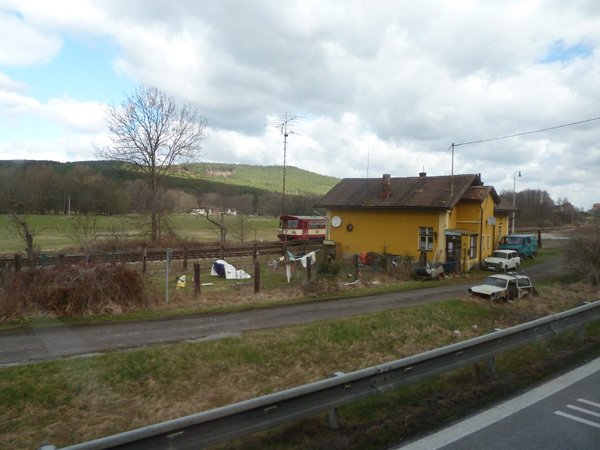 After the war, Czechs of German descent were then subjected to a similar fate. While the leaders and supporters of the Nazi régime certainly deserved to be punished, it would be hard to justify punishing in men, woman and children that, by the fate of birth, found themselves caught in the middle.
After the war, Czechs of German descent were then subjected to a similar fate. While the leaders and supporters of the Nazi régime certainly deserved to be punished, it would be hard to justify punishing in men, woman and children that, by the fate of birth, found themselves caught in the middle.
Photo (hdm from bus): This small railway station appears to be much the same as it was for several decades.
It is estimated that in the years following the second War, upwards of 250,000 Germans died or were killed, 1.6 million were expelled to the allied sectors of Germany (the lucky ones) and a further 800,000 (the unlucky ones) were expelled to the Soviet occupied German sector. About 160,000 to 250,000 remained in Czechoslovakia to continue life as best they could.
It is not possible to imagine how this must have torn apart families and the infrastructure of this beautiful country. Included in the attached photo album are pictures of some of the tragic scenes that occurred during and following World War 11, then when under Soviet control. The photos are included as a stark reminder of how people, when finally released from the chains of oppression, are willing to work to build a better world.
That things have changed for the better in the Czech Republic (the original country was split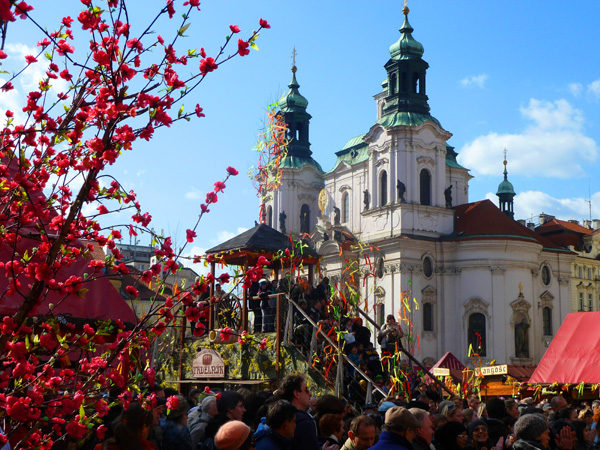 into Czech Republic and Slovakia) was evident the moment we set foot in downtown Prague. Our hotel was old city elegant with tons of marble, sculptures, nine foot ceilings and doors, marble baths, yet the cost was very reasonable by Western European and North American standards.
into Czech Republic and Slovakia) was evident the moment we set foot in downtown Prague. Our hotel was old city elegant with tons of marble, sculptures, nine foot ceilings and doors, marble baths, yet the cost was very reasonable by Western European and North American standards.
Photo (hdm) This church sits at one corner of the main square where dozens of food kiosks, miscellaneous vendors, a full sized entertainment stage and buskers beckon. Hundreds of people filled the square even in this, the ‘off-season’.
It soon became evident there were many other wonderful hotels and residential areas throughout the city were one would happily hang their hat for an extended holiday. No doubt the outlying areas would be even less expensive and would provide greater local flavour but, for our purposes, on this trip, the hotel was an ideal selection.
We were within walking distance of most of the main city attractions that would keep our feet moving for four days and nights during which we likely covered at least 100 km of streets, side-streets and bridges. The old city aspects of Prague remained intact as it was one of the 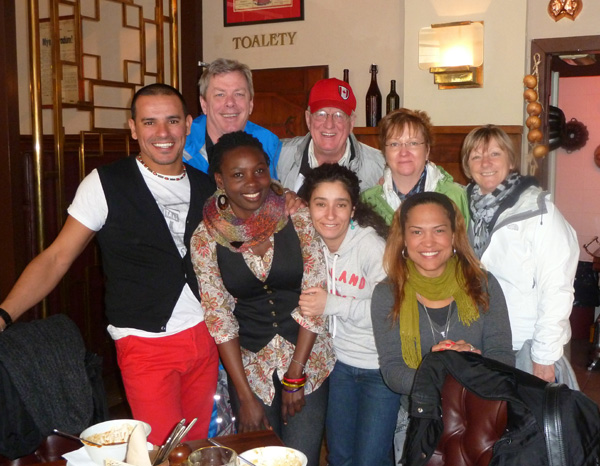 few major cities in war-torn Europe that came through the conflict with nary a bomb landing within the city limits. Virtually all of the historic landmark buildings and bridges are in great condition, some well over a 1500 years old. Remarkable!
few major cities in war-torn Europe that came through the conflict with nary a bomb landing within the city limits. Virtually all of the historic landmark buildings and bridges are in great condition, some well over a 1500 years old. Remarkable!
Photo (snapped by our waiter): It was easy to meet other travelers along the way. Garth beckoned this group into ‘our’ pub where we had stopped to have lunch. Lunch always started with beer or wine (mandatory). This group of young people were from four different countries (Germany, Ghana, France and England).
In the same pub, on another day, two young woman sent over a round of beer and wine after we helped them select their lunch and pointed out some of the hot tourist spots.
The medieval centre of the city, a landmark of the Holly Roman Empire, provides tourists with a never ending array of shops, restaurants and pubs along streets that seldom feel the tires of a motor vehicle. While trolleys obviously provide excellent service, our legs were the best choice for travel within a ten kilometer circle. As is true of many tourist centres, the shops held much of the usual imported kitsch, but even these shops, in old buildings, provided an insight into a city and people that are re-inventing themselves in the modern world. While prices are reasonable along the main thoroughfares, you need only walk one or two blocks into the less traveled areas to get a reduction of 40-50%. This includes beer and wine (our new water) and food that, even at the best restaurants, were a bargain.
When walking, you will be hard pressed to maintain a steady pace, as the array of old buildings goods and services, provide constant temptation. If you were a bit disciplined, as Garth and I but not the girls (to many scarves and other girl things) you could make the Charles Bridge in four hours of leisurely walk from our hotel (roughly four kilometers). The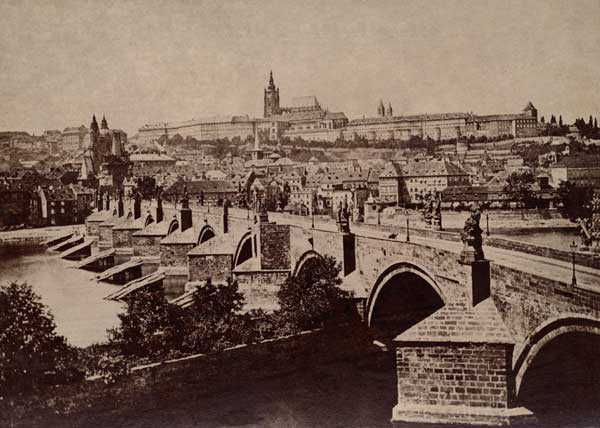 oldest and best known bridge in Prague it not only provides a gateway to a whole other area of interesting scenes, it is filled with all sorts of entertainment, artists, statues and majestic scenes, where one could easily while away an afternoon.
oldest and best known bridge in Prague it not only provides a gateway to a whole other area of interesting scenes, it is filled with all sorts of entertainment, artists, statues and majestic scenes, where one could easily while away an afternoon.
Left: An artists depiction of the Charles Bridge looking toward the Prague Castle as it was in 1870. Little has changed in terms of buildings that can be viewed from this vantage point.
Once across the Vltava River, one stands below the majestic the Hradčany (Prague) Castle and, a little further along the bank, the Czeck Parliament Buildings. To arrive by noon and catch lunch in one of the small restaurants along the river is simple joy. A little fortification never hurts as the hours of touring the Castle and surrounding sites is taxing as one travels back in time to a trip back the Medieval times of old Europe. If your time is limited, it is best to catch a guided tour as you will gain priority entrance to the building and the vast knowledgeable guides who will acquaint you with many facts that might otherwise pass by unnoticed.
For instance, it was from a third floor window in a wing of the castle a group of irate Protestants tossed two Catholic Governors, an action that lead to a Thirty Year War (1618 – 1648). Surprisingly the Governors survived their fall. The war was fought largely on religious differences between the Protestants and Catholics, although other political aspects played a role.
Up to that time, 17th century Prague had been a hot bed of science and alchemy that helped to shape modern science. While men such as Tycho Brahe, Johannes Kepler and numerous others, did not get it exactly right, they did refine earlier views of our solar system and built the bridges upon which much of our current understanding of the Universe is based. (The Motion Paradox, Joseph Mazur, p. 83ff)
In another room was displayed the “Crown Jewels”, the Crown of Saint Wenceslas that is, the  subject of an incident during World War II. Then Reich Protector of Bohemia and Moravia, one Reinhard Heydrich, picked up the jewel encrusted Crown and placed it on his head while in the presence of several local dignitaries. Perhaps he did not know (or did not care) of the legend that stated any ‘usurper’ (as he clearly was) placing the crown upon his head would be doomed to die within a year. Less than a year later Heydrich was assassinated by a group of local men who were later captured and shot. Needless to say I left the Crown sitting in the display case – no need to tempt fate.
subject of an incident during World War II. Then Reich Protector of Bohemia and Moravia, one Reinhard Heydrich, picked up the jewel encrusted Crown and placed it on his head while in the presence of several local dignitaries. Perhaps he did not know (or did not care) of the legend that stated any ‘usurper’ (as he clearly was) placing the crown upon his head would be doomed to die within a year. Less than a year later Heydrich was assassinated by a group of local men who were later captured and shot. Needless to say I left the Crown sitting in the display case – no need to tempt fate.
All around the city there were numerous humorous reminders of the Soviet occupation, one being a rather famous ‘pink tank’ upon which a large sculpted index finger was placed (and since removed) and another, a cow bearing a Soviet Star (the cow was also removed). These ‘pranks’ along with others appears to have helped the city and country make the transformation to a new more peaceful reality where political satire could again be presented without severe repercussions as one might expect in modern day China.
This satire was also clearly evident in the theatre. One Black Light Show (very popular in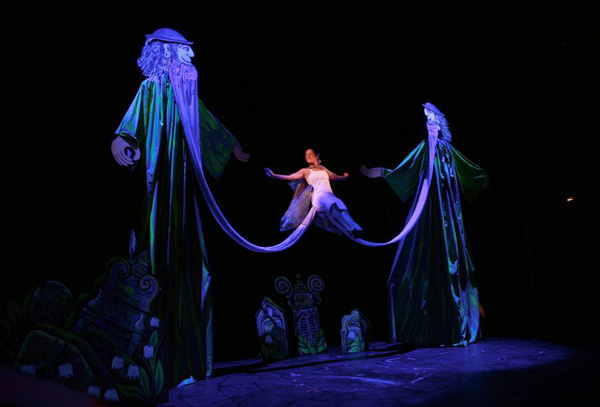 Prague) that Lynn and I attended took a jibe at the German personality. Even a friend, who shall remain anonymous, took a moment to more closely inspect one of the many sculptures that dot the parks along the river (photo below). I captured the poignant moment for ‘posterity’.
Prague) that Lynn and I attended took a jibe at the German personality. Even a friend, who shall remain anonymous, took a moment to more closely inspect one of the many sculptures that dot the parks along the river (photo below). I captured the poignant moment for ‘posterity’.
Although this country has now been split into the Czech Republic and Slovakia, the citizens, as with those in Hungary, are moving forward with optimism as they embrace a democratic, free enterprise system. It is another glowing example of how much the world has moved forward in the twenty years since the collapse of the Soviet Union.
Oh, one other thing. When planning a trip to Europe (anywhere), plan for the early spring (May – June) or the fall (September – October. This will afford you the best opportunity to travel the country without being faced with horrendous crowds. Our trip along the Danube took us from bear the end of March to the middle of May. This is just on the cusp of spring but for access to cities and the tourist sites, it was ideal. A little later in May would have been better as the trees, flowers and shrubs would have added immensely to the beauty of the countryside.
Following the footnote are more photographs of our passage around Prague. A larger Photo Album is attached.
Harold McNeill
Footnote: Quebec Student Protests
It was the Quebec student protests that spurred me to get busy and write the Prague post as I felt the people of the many former satellite states of the Soviet Union, demonstrate a dogged determination (work ethic?) that seems to sometimes be missing from our culture. While the vast majority of people (both young and old) in Canada exhibit this characteristics, a few, shall we say a privileged few, seem too take too much for granted. I think that small but vocal minority of students in Quebec are part of that group needy group.
For the full post link here: Quebec Student Protests
Harold
Photo Essay
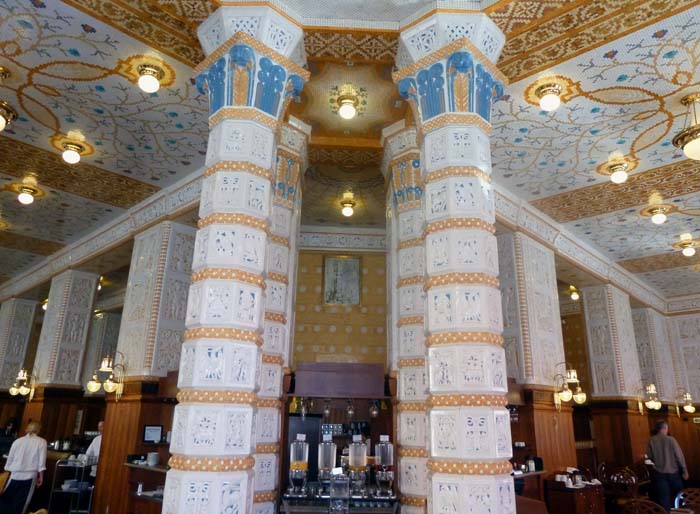
The Art Deco Imperial Hotel, our modest digs during our time in Prague, is filled with marble pillars, bronze statues, ornate staircases (below), fine furniture and misellaneous pieces of art work sufficient to fill a museum. Above is the caual dining room where the complimentary breakfast was served.
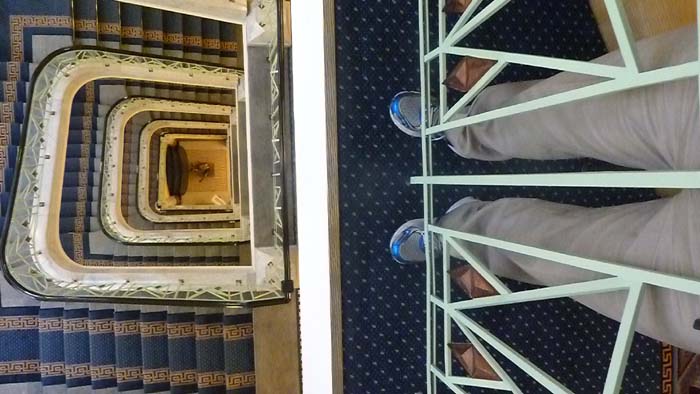
With a small camera it was hard to capture the broad expanse of these stairs. Although there were elevators the size of small rooms, it was a better choice to use the stairs. Here the lobby floor is five floors below.
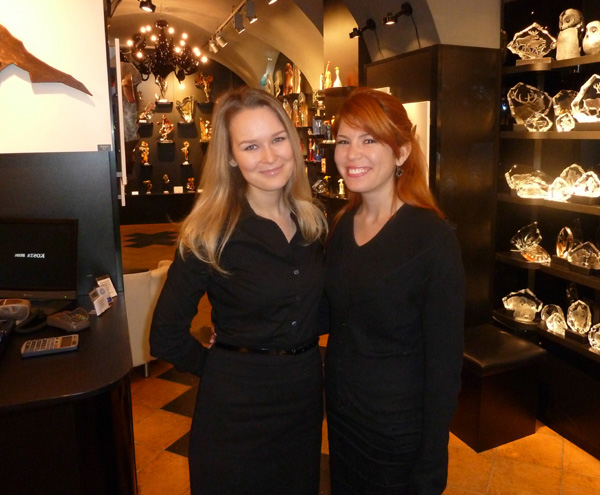
These young salespersons work in Swedish Specialty Art Shop. The sculpted glass art (no pictures allowed, so I took one of the girls) range in price from the low hundreds to well over 100,000E
Swe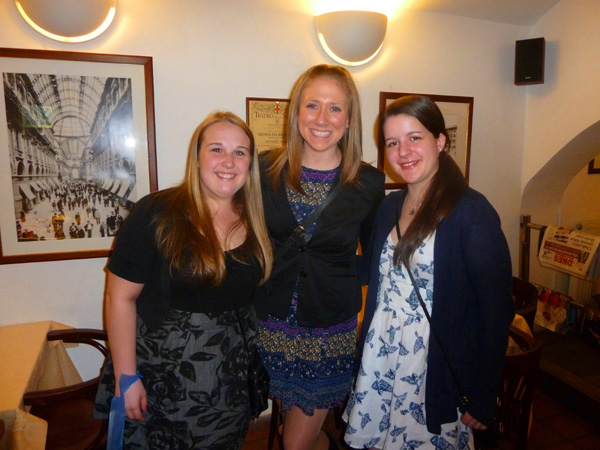
We met these three students from Cork, Ireland in a amall coffee shop late one evening. The girls were on study break – studying life in other countries we suppose. I believe the three were from the United States. It is great to see such a large number of young people traveling the world as it certainly helps to broaden ones horizon.
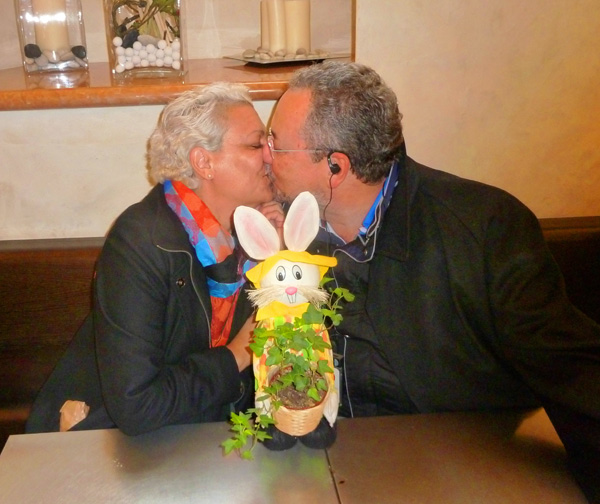
Ahh, young love, must be our tour friends from Brazil. Perhaps, if all progresses according to plan, we shall again meet at the World Cup 2014.
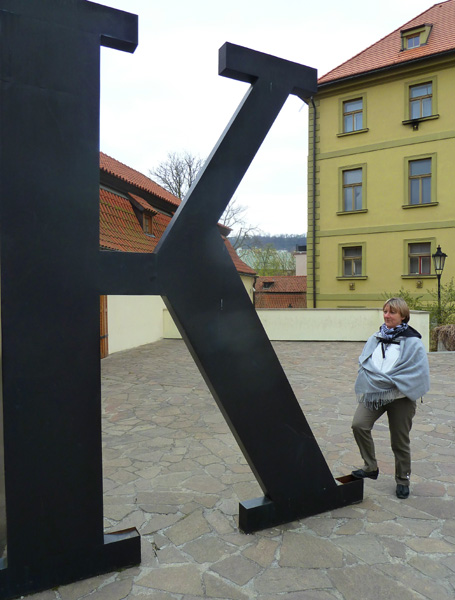
Lynn proudly demonstrates that she has one leg up on Kafka (1883 – 1924), the German language author considered to be one of the best of the 20th Century. The term Kafkaesque has become popular around the world, meaning, among other things, “surreal distortion” “unproven allegations in sealed files” “Kafkaesque fantasies of the impassive interrogation, the false trial, the confiscated passport … haunt his innocence (now does that sound like Homeland Security and CSIS on a good day?)”
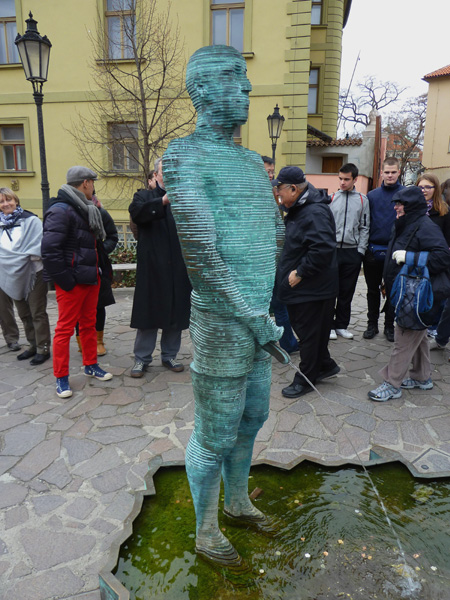
Now where else would this statue be other than outside the Kafka Museum in Prague. Needless to say the statue (one two men facing each other as they pee in a pond) created a bit of sensation in Prague. Ahh, but being the broadminded people they are, the statues remain.
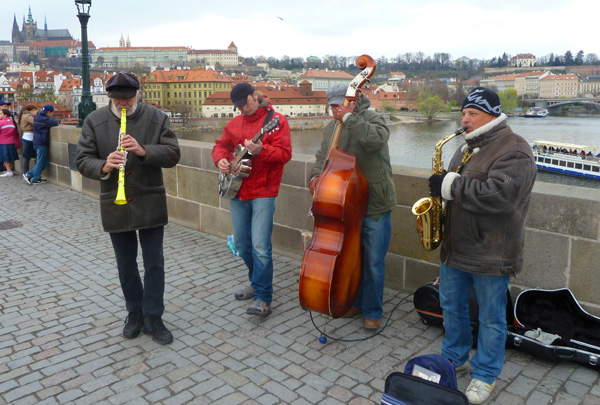
A constant stream of rather good musicians work the Charles bridge from dawn to dusk and beyond. The variety of musical styles could keep one entertained for hours. Ed Walker and the Roasted Rooster band (or whatever they now call themselves) would certainly be a big hit on this bridge.

The Black Light theatre shows are performed in theatres holding 100 – 200 people and usually last 60 – 90 minutes. Very entertaining. I do not recall seeing any similar shows in Canada. Does anyone recall?
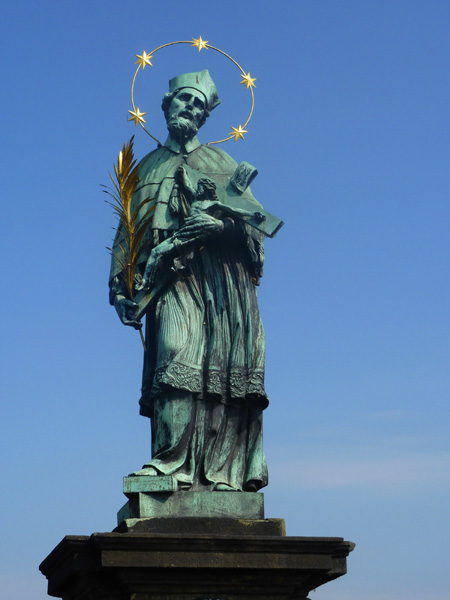
Statue of John of Nepomuk. Father John was a priest in Prague under King Wenceslas IV (son of Charles IV) and as part of his duties, received the confessions of the Queen. Unfortunately for Father John the King was a very suspicious man as he wanted to know the Queen’s confessions which the good father would not reveal, not even to the King, because it would be against his commitment of confidentiality. Father John was therefore executed by being thrown into the Vltava River from the bridge and drown (Web Source).
Over the years tens of millions of people (including we four) took time to touch a small spot on the bridge below the statue as legend has it that touching the spot will bring good luck. It must certainly be true for our time in Prague was filled with good luck.
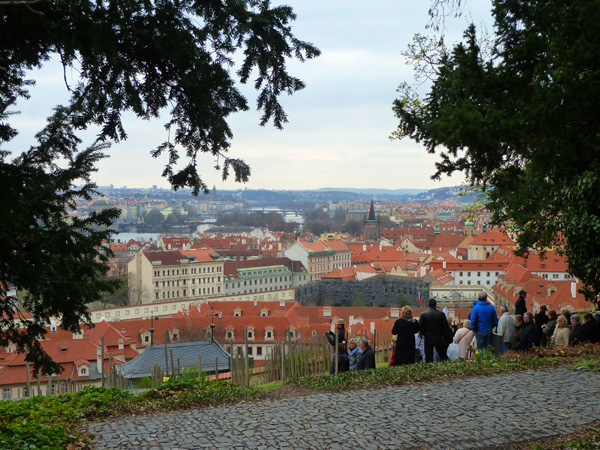
Photo: Looking out from the Prague Castle: The Jewish Quarter, known as Josefov, is located between the Old Town Square and the Vltava River. Its torrid history dates back to the 13th century, when the Jewish community in Prague were ordered to vacate their disparate homes and settle in one area (Wikipedia). Unfortunately, we did not have time to tour this area.
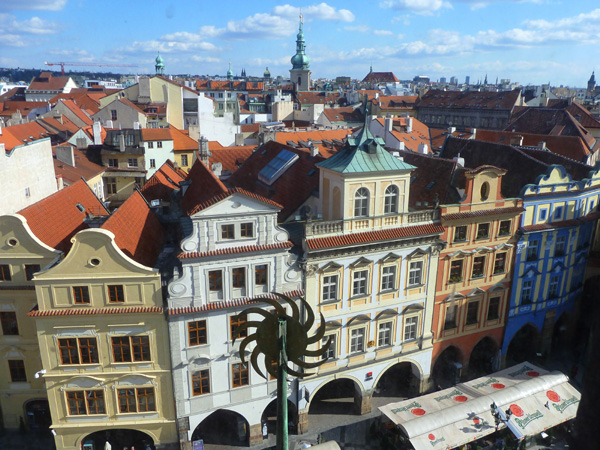
Looking out on the city from the church steeple on the Old Town square.
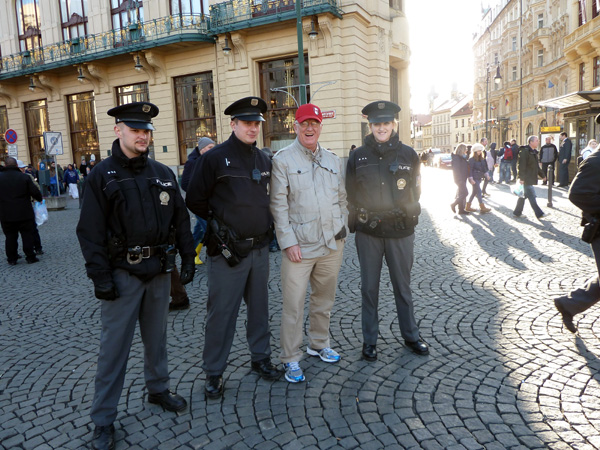
The police take a dim view of ‘money changers’. I was fascintated warning being given to tourists. I thought I might give it a try but these three (two not very friendly and a third, the woman on my left, was pretty jovial) escorted me from the square with a warning to behave myself.
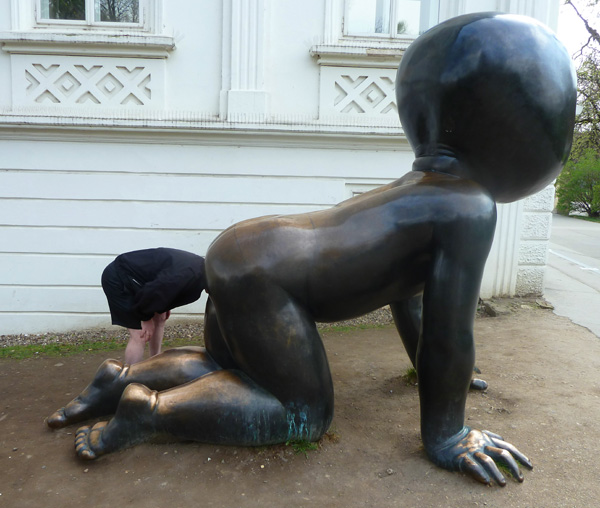
This unknown tourist must have decided to have a closer look that the structural complexity of this bronze statue found on hands and knee’s in a riverside park.
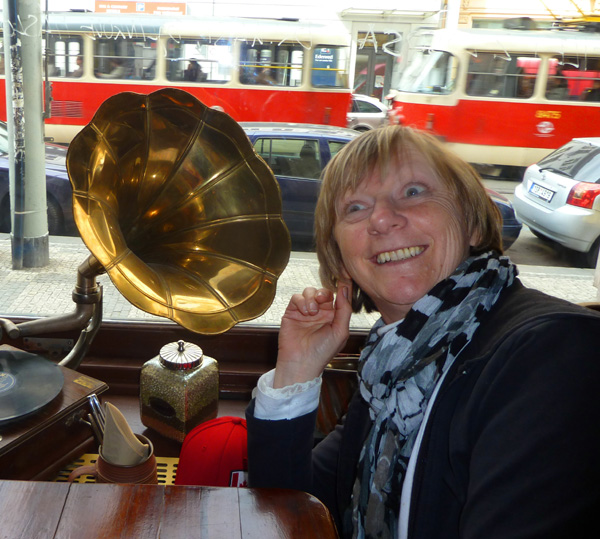
Now here is a woman who loves her music, any music, any time of the day or night.
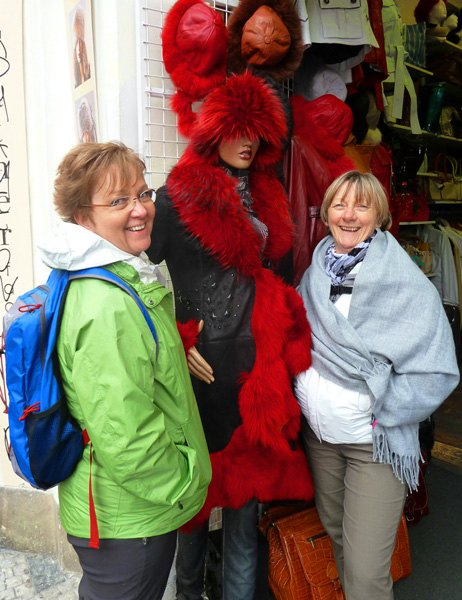
Photo Lynn and Esther found a thousand different shops in which they could wile away hour after hour after hour. Here one of the store staff provide some fashion tips to the ladies.
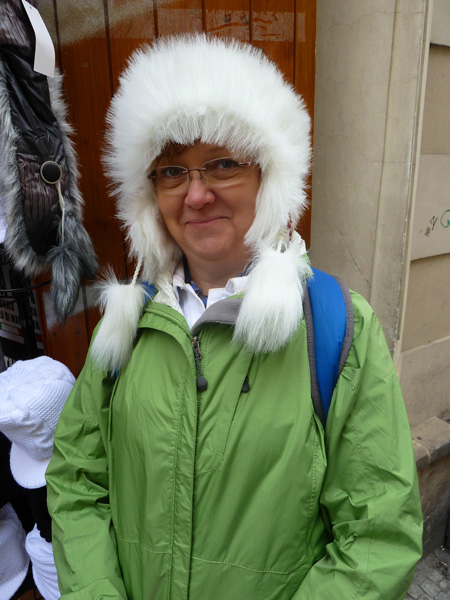
This lovely young Russian Miss, Olga from de Volga, looked suspiciously like our friend Esther. I was going to make a play but she clearly had her eyes on Garth.
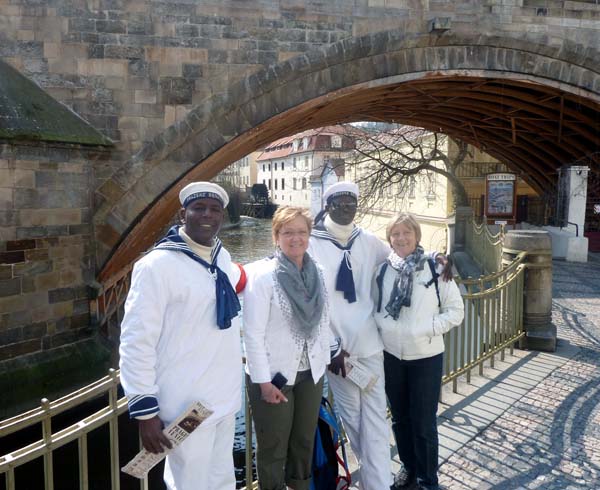
Least you might think Garth and I had wandering eye’s and that we seemed to lead charmed lives, such was not always the case. Here we found two ladies in which we had an interest gettng chummy with the Czeck Navy. Czech Navy? Man, the Czech don’t even have an ocean. Damn those sailors, don’t know when to leave things well enough alone. This same thing happened to me a thousand other times when I was a young man in Victoria with all those Pacific Fleet guys catching the women.
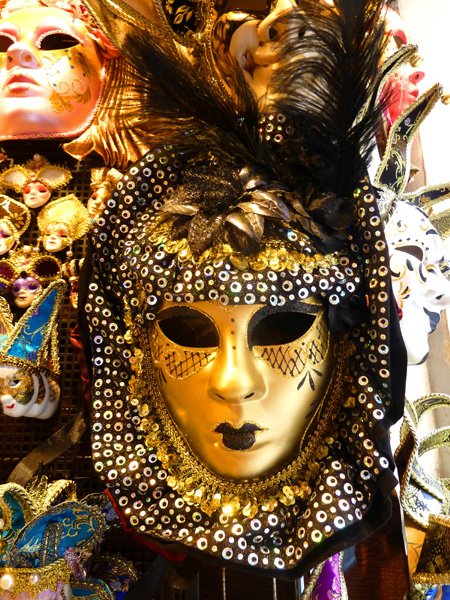
There were literally thousands of these beautiful masks in shops around Prague.
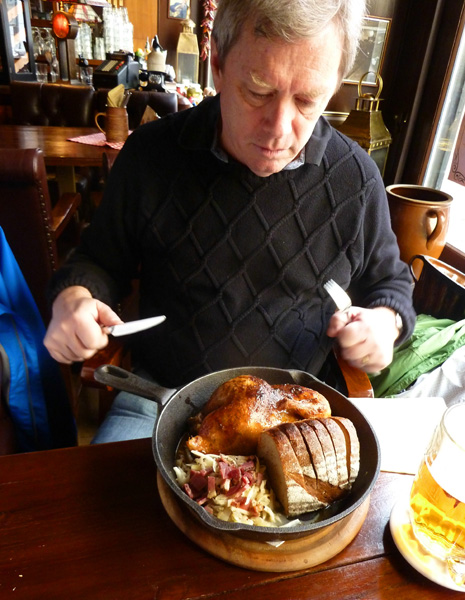
A typical light lunch for Garth
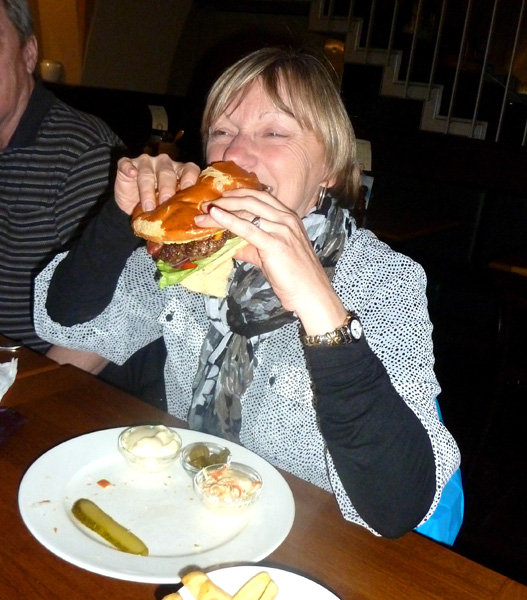
And for Lynn, MacDonald’s Big Mac (there must have been two pounds of meat in the sucker)
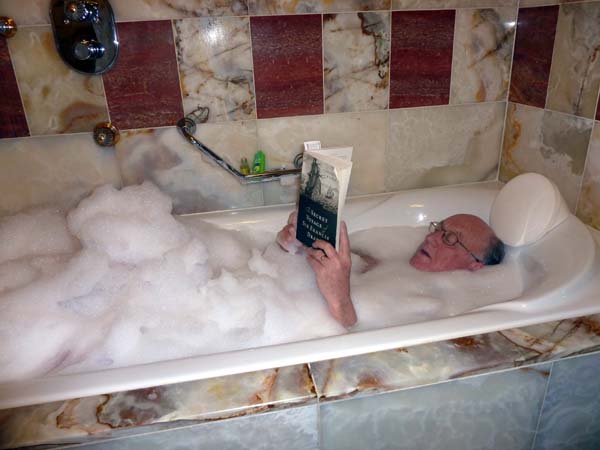
This was not exactly roughing it as we have on many trips. Lynn checked in periodically to make sure I had not fallen asleep and slipped under the suds.
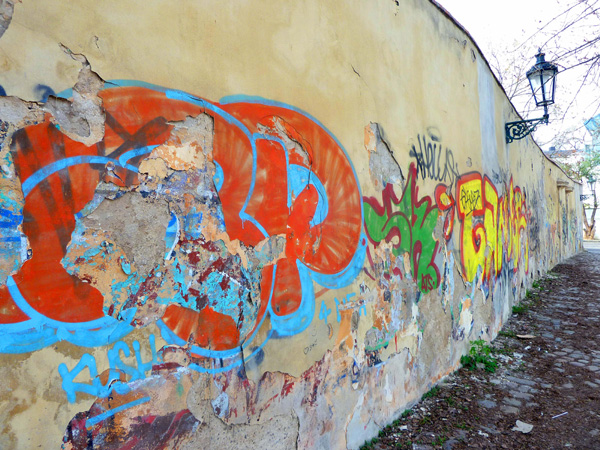
Graffiti along river walls often revealed political satire that must have been a left over from the communist era.
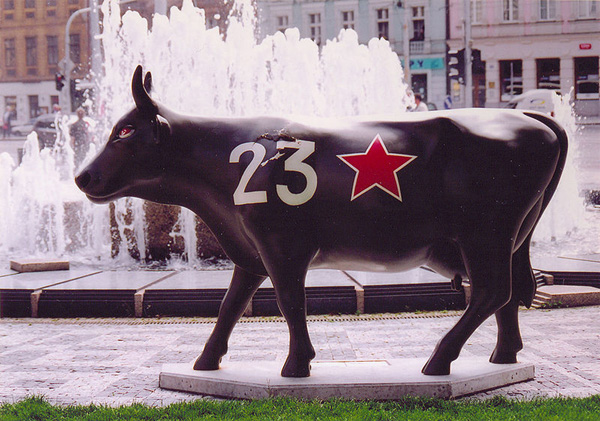
This left over from the Prague International Cow Parade (part of a worldwide charitable event) became the subject of much affection in Prague after someone painted a Soviet Star and the #23 on the side in remembrance of Tank #23 (the Pink Tank). The cow sat for a time near one of the fountains while the tank was moved to a museum (shown other photos).
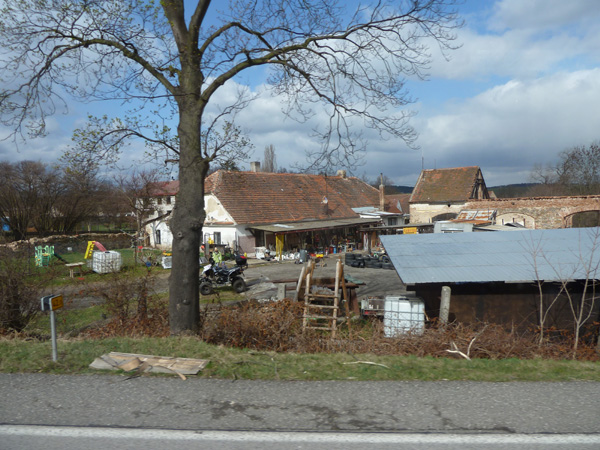
Photo (from bus): While every country in the world (rich and poor alike) will display scenes such as this, in the Czech Republic it is a stark reminder of the reminents of communist era.
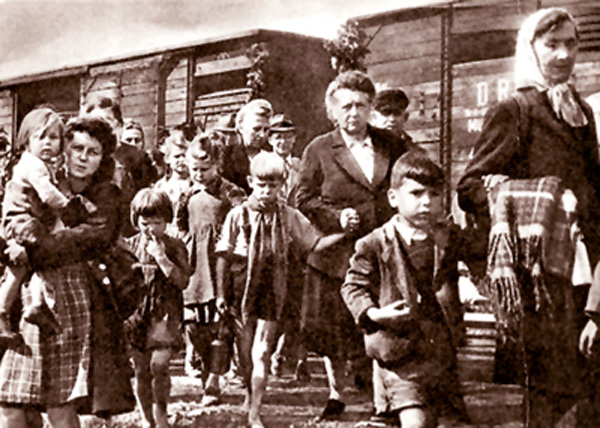
German men, women and children being marched out of Czechoslovakia by the Soviet Army.
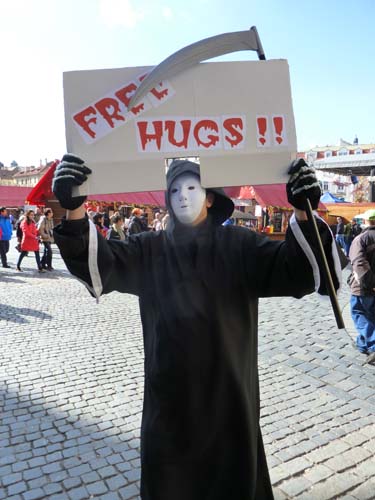
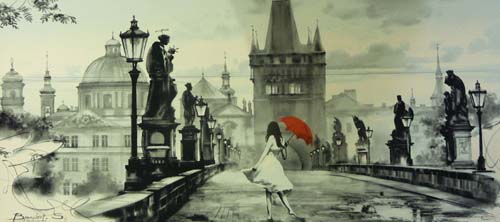
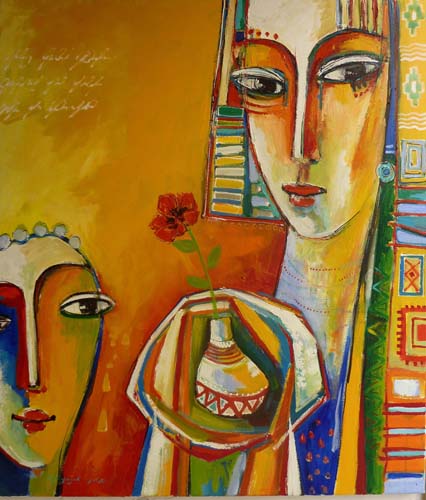
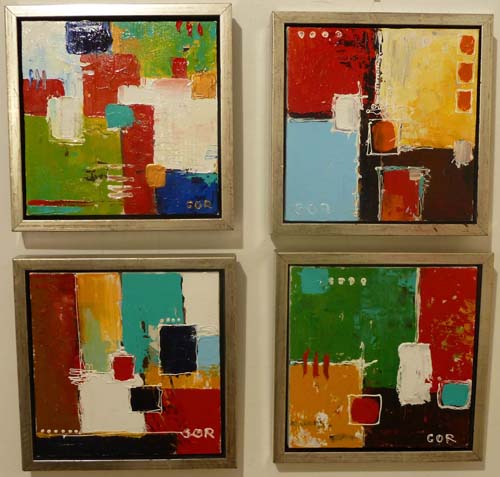
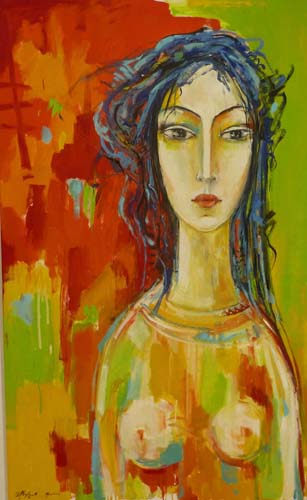
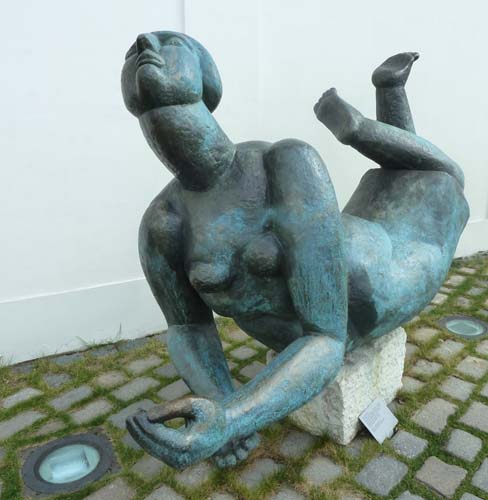
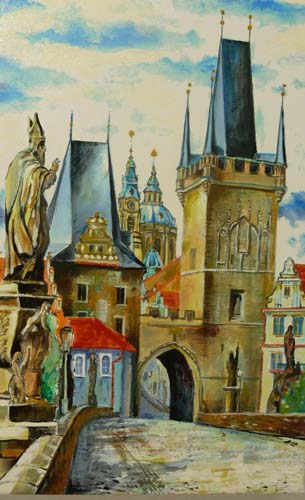
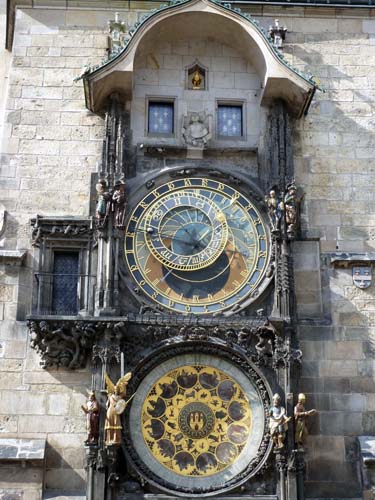
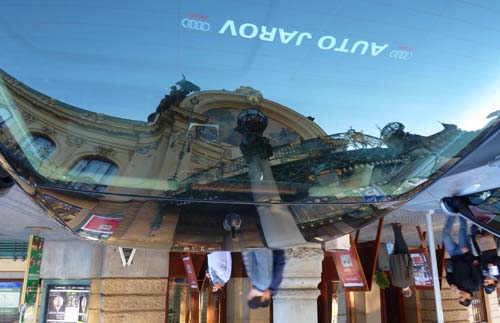
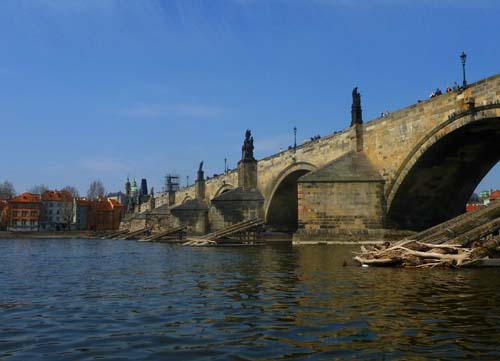
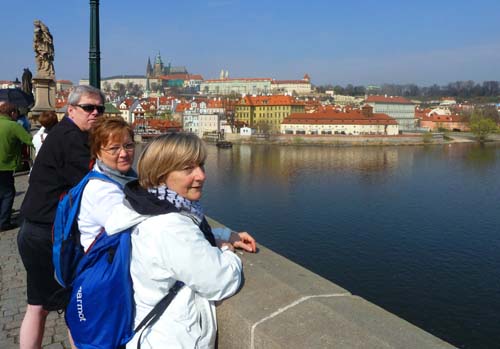
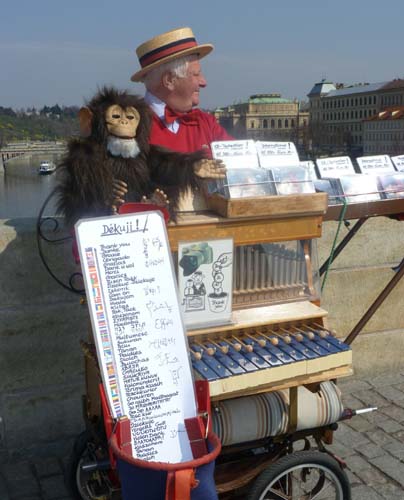
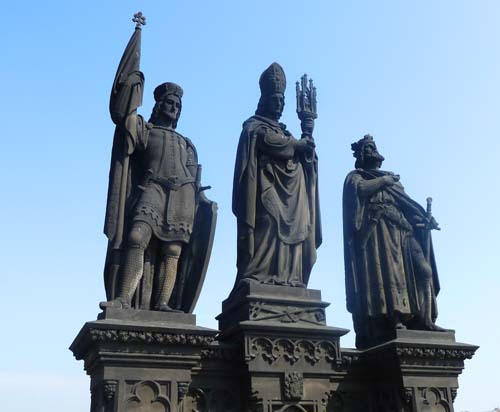
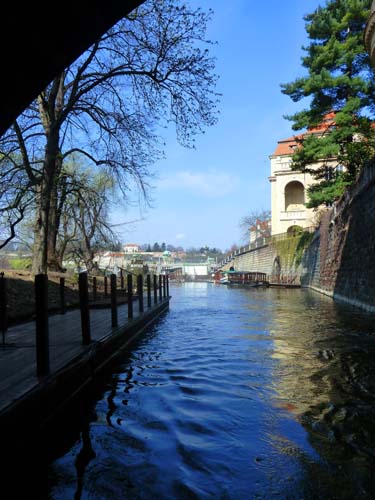
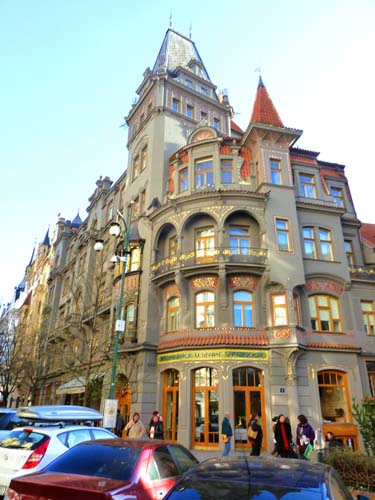
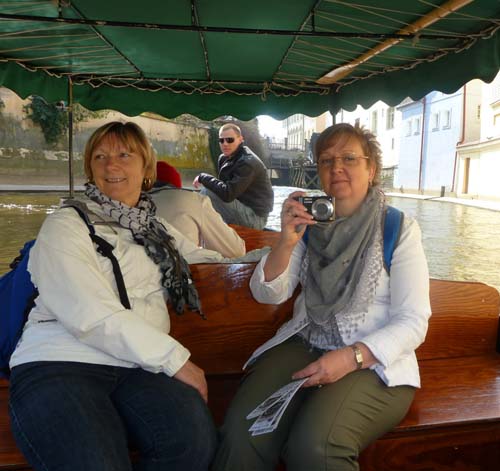
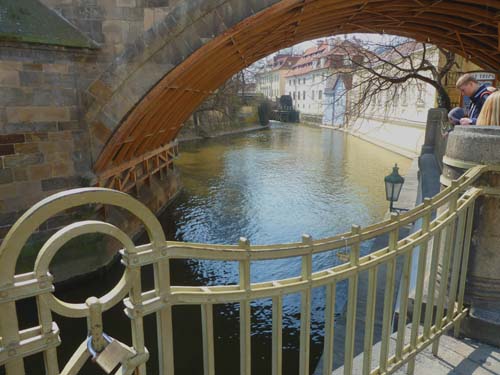
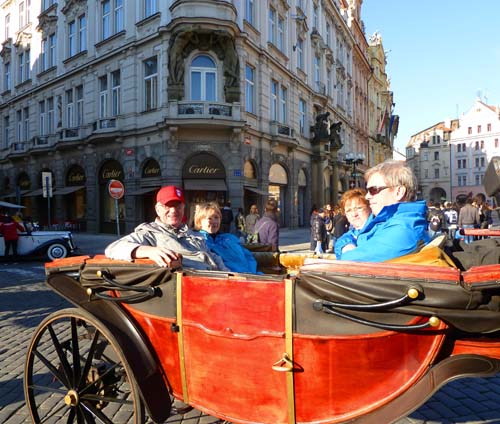
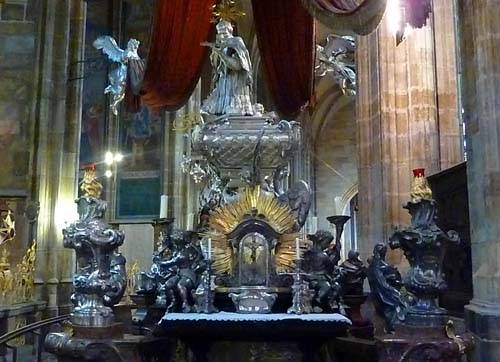
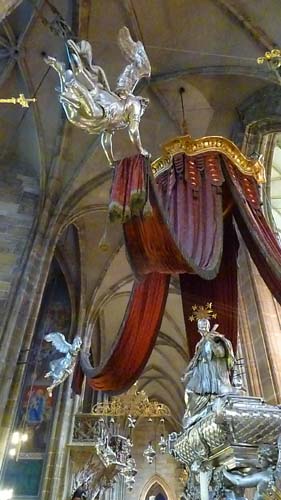
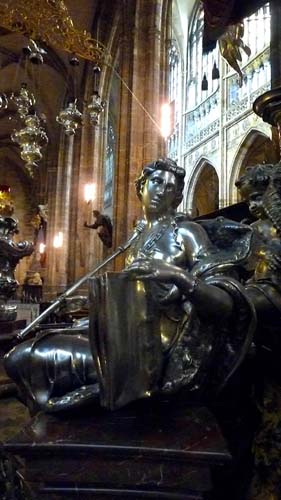

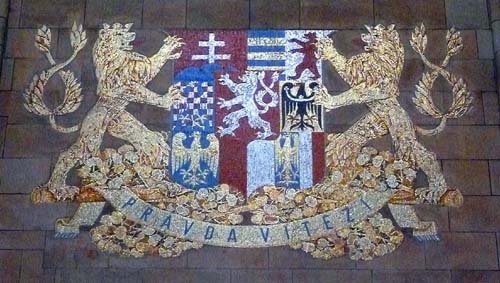
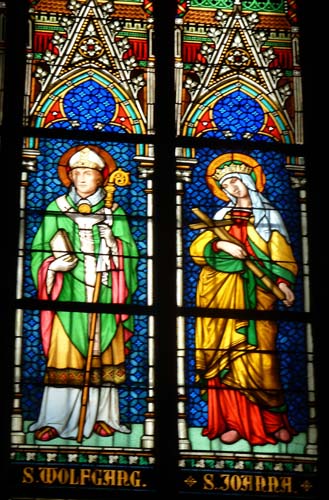
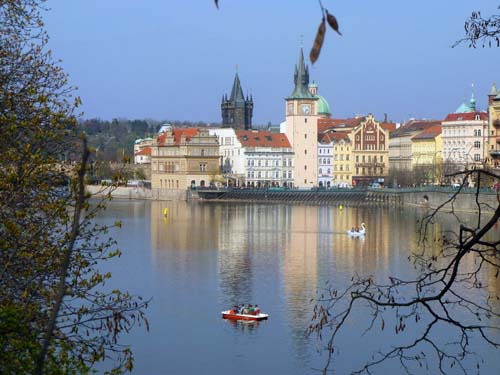
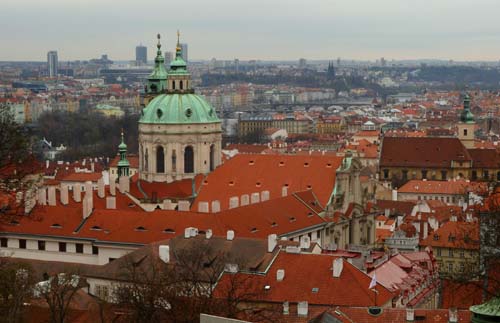
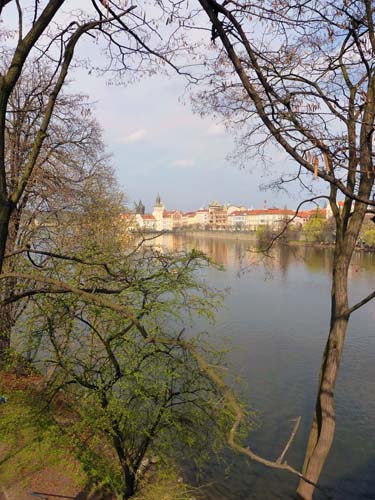
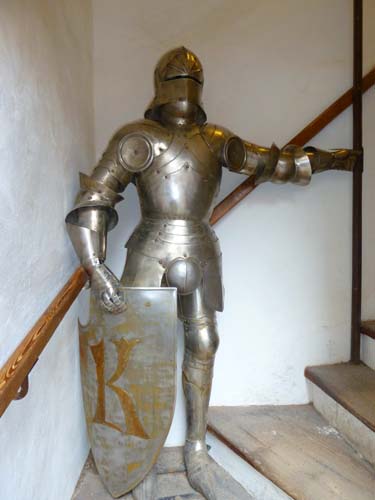
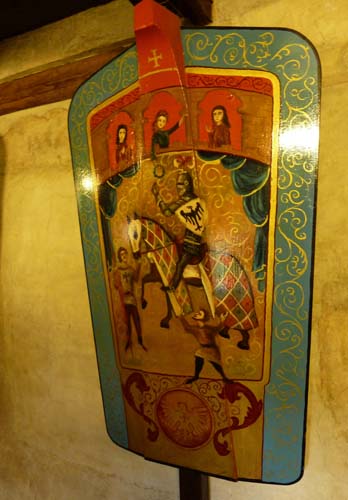
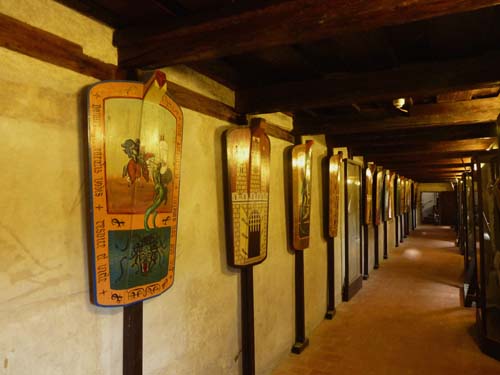
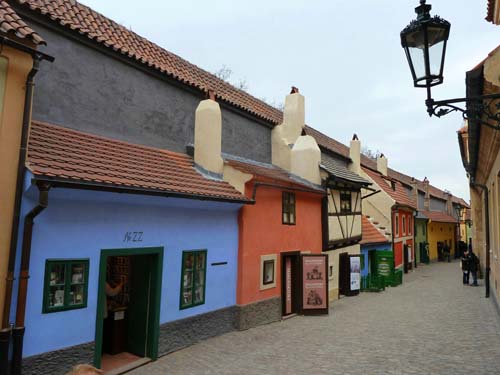
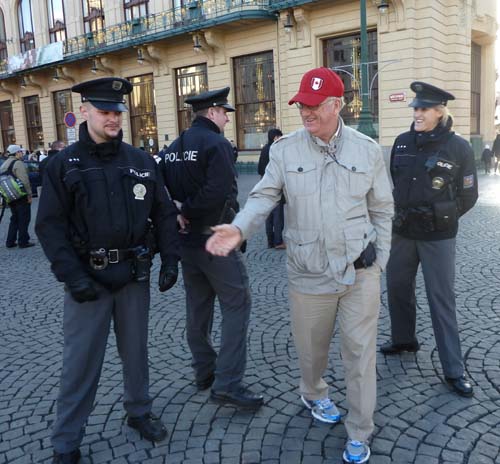
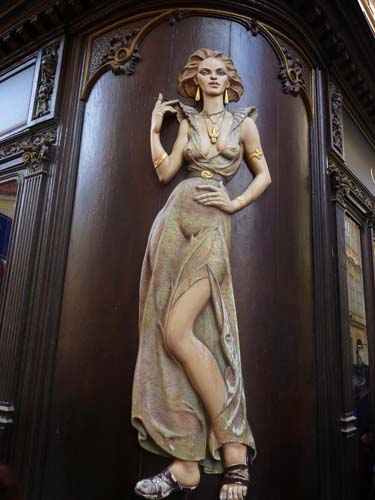
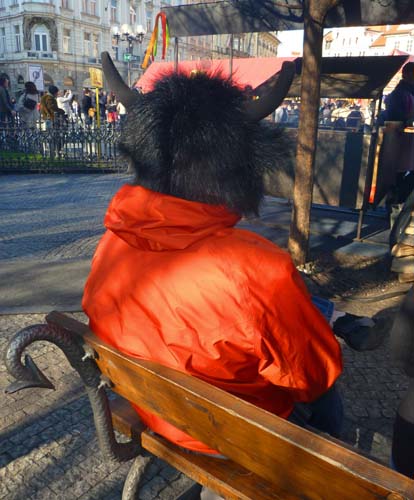
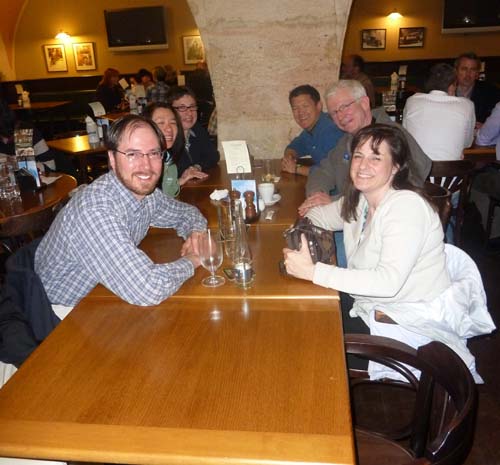
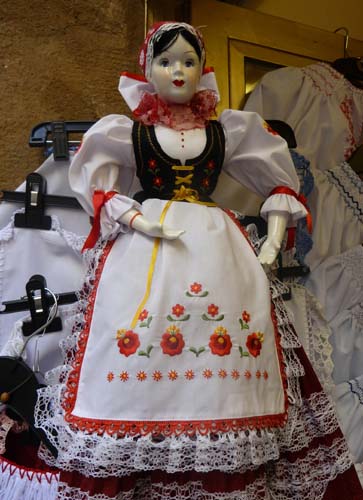
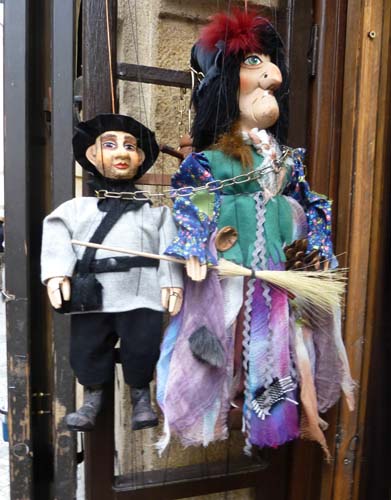
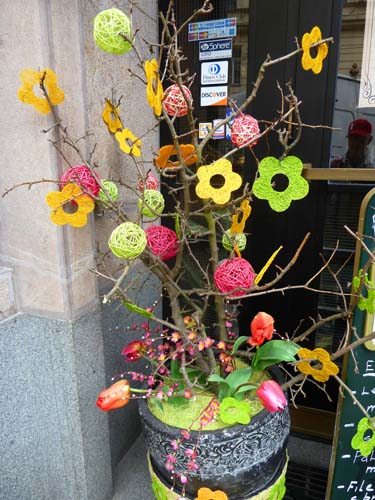
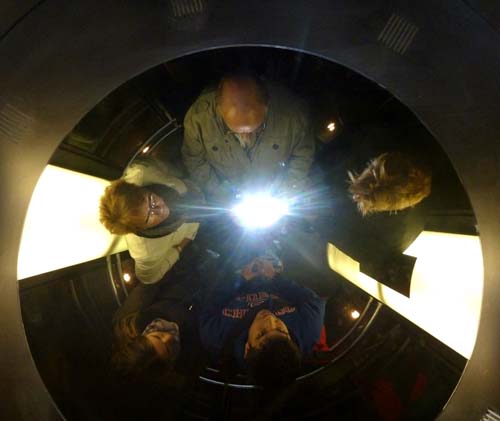
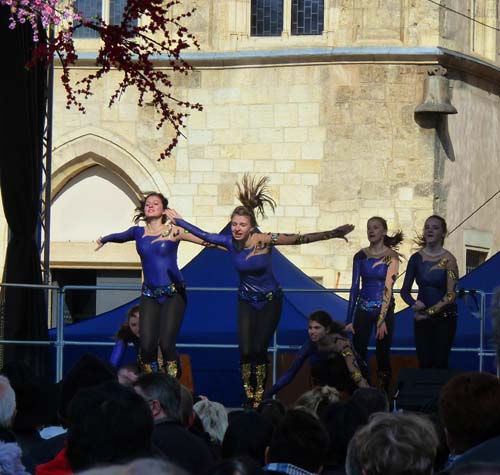
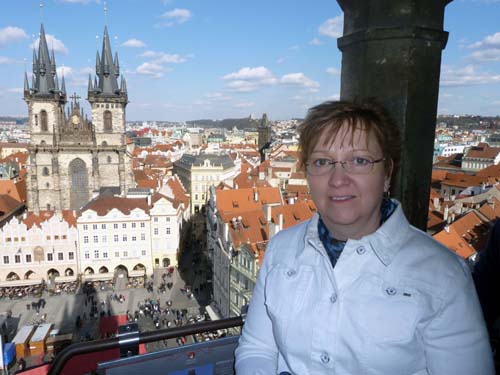
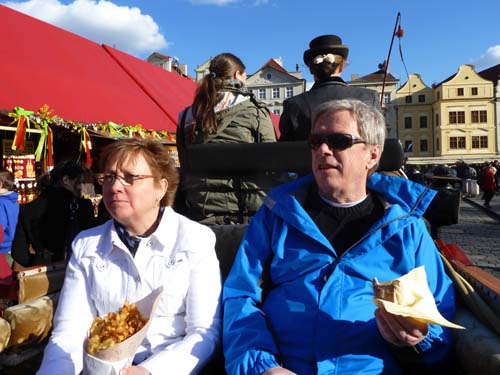
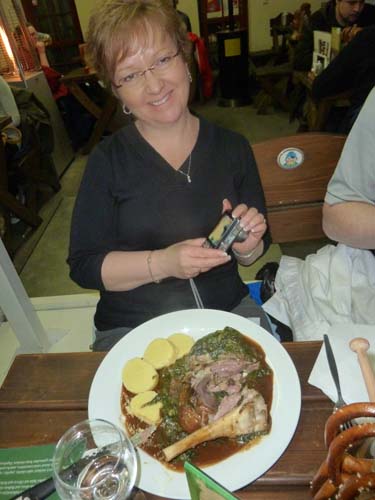
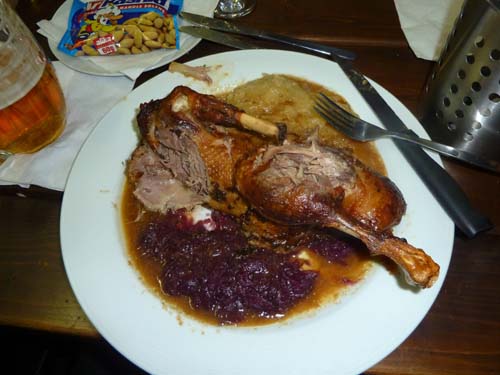
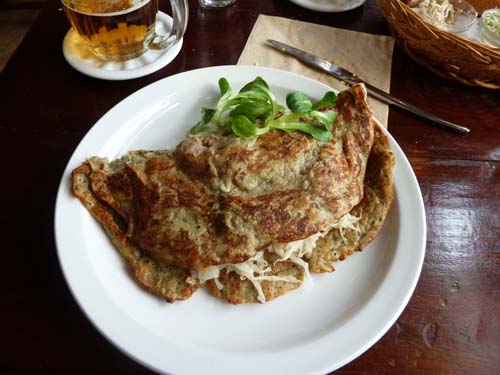
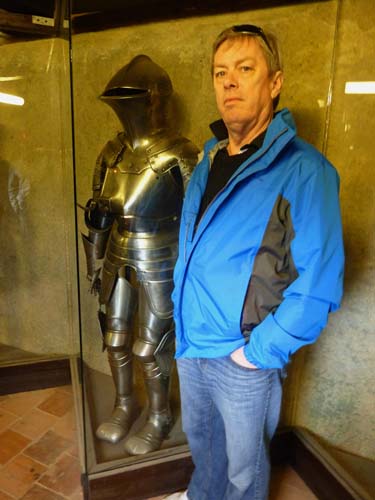
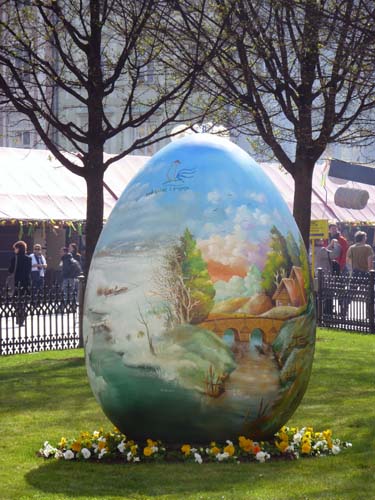
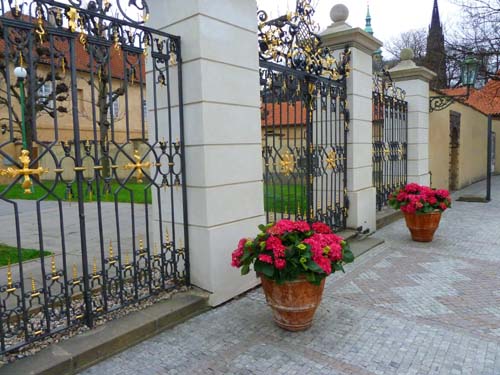
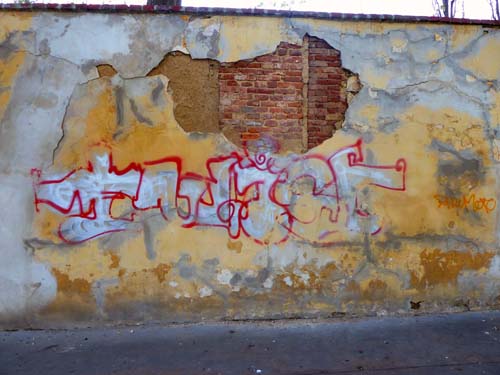
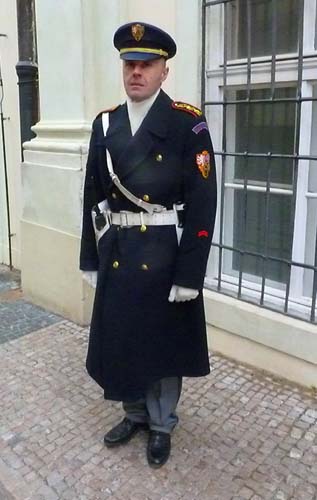
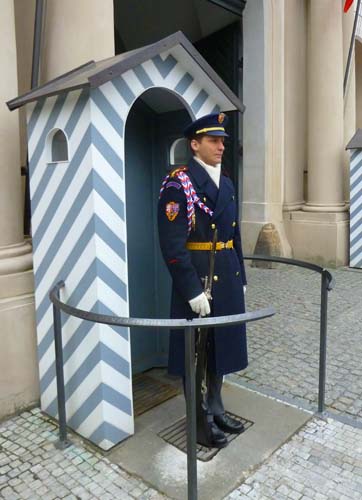
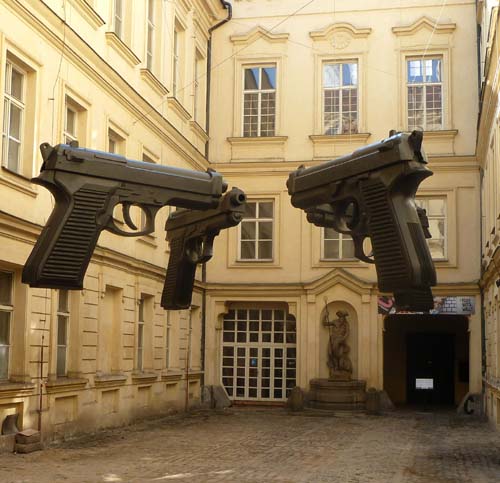
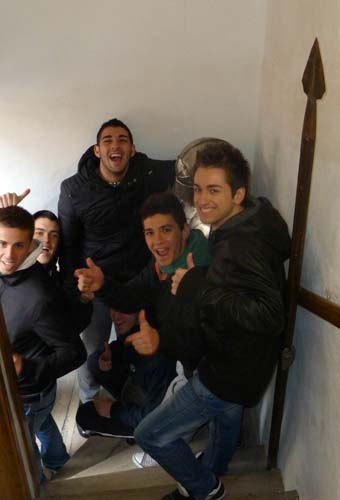
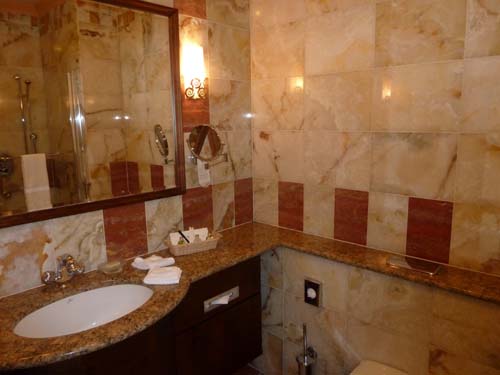
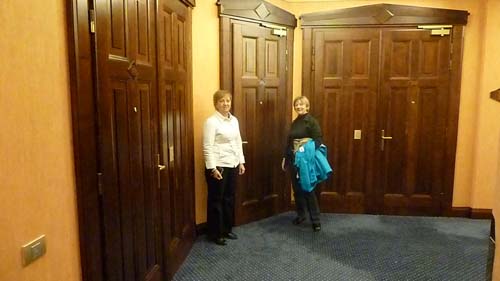
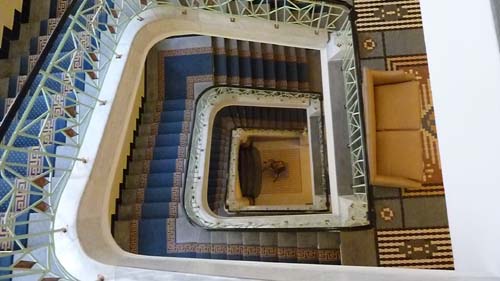
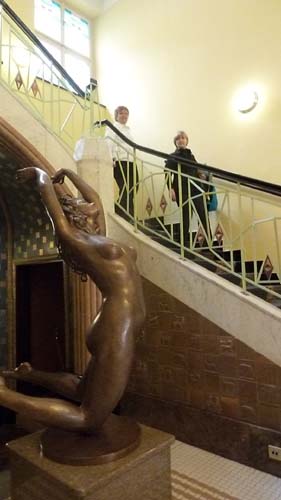
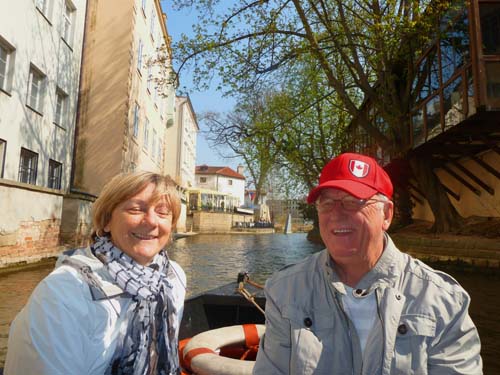
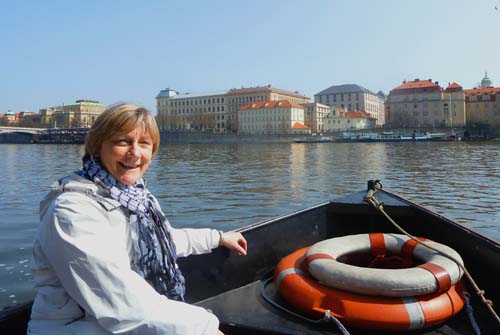
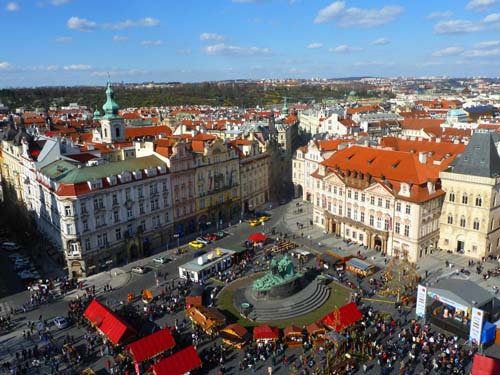
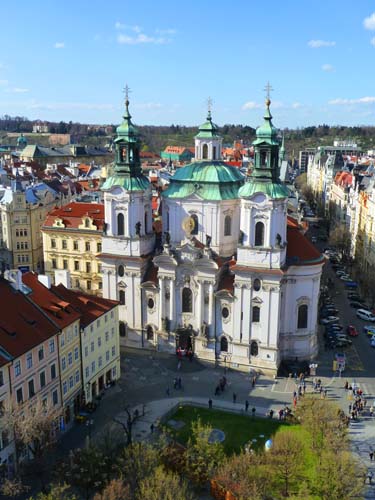
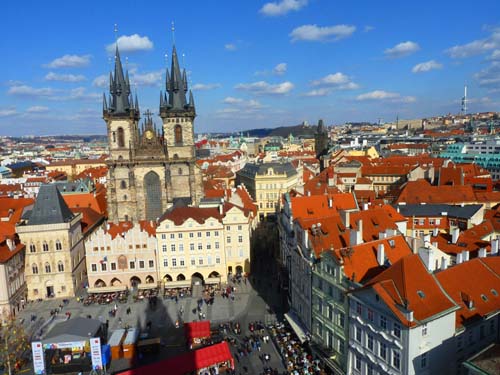
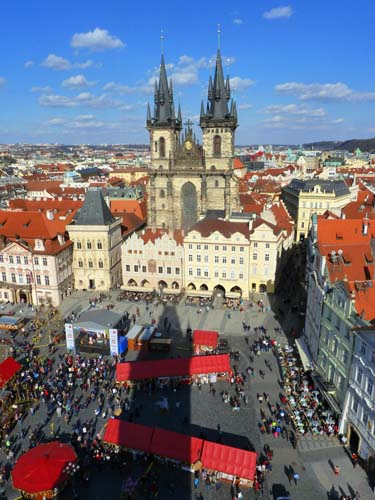
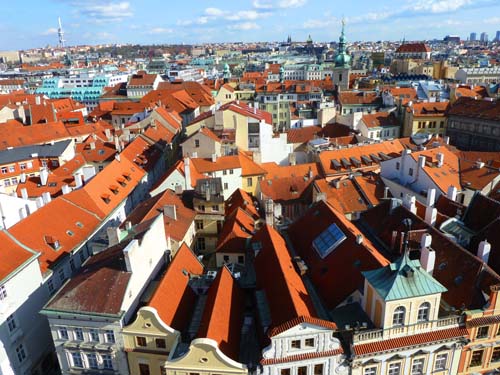
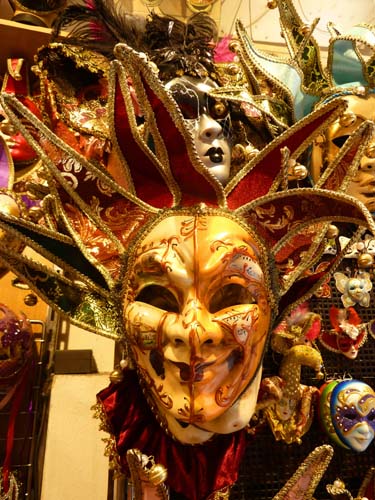
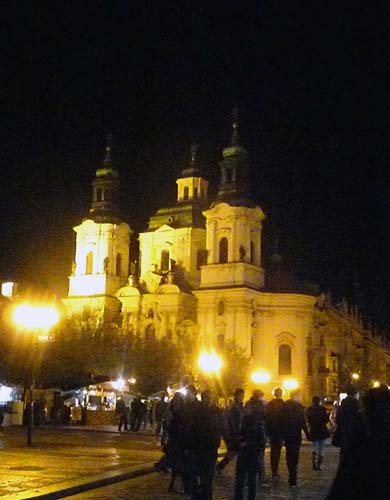
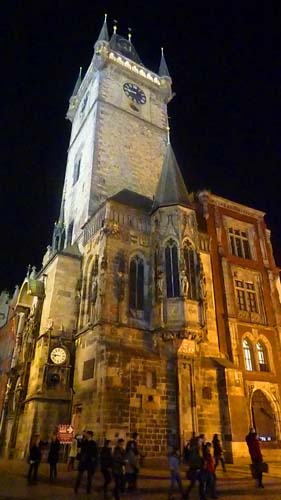
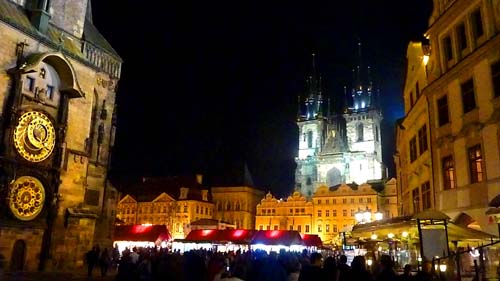
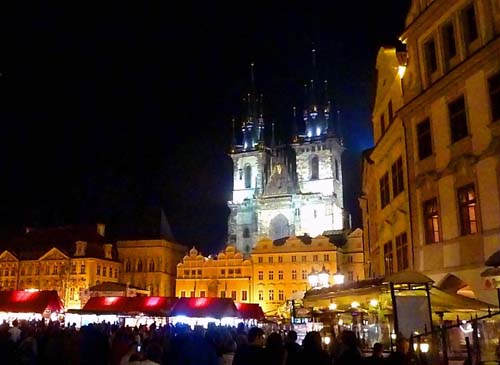
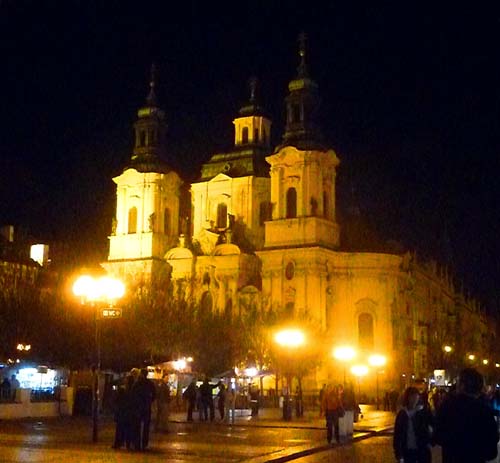
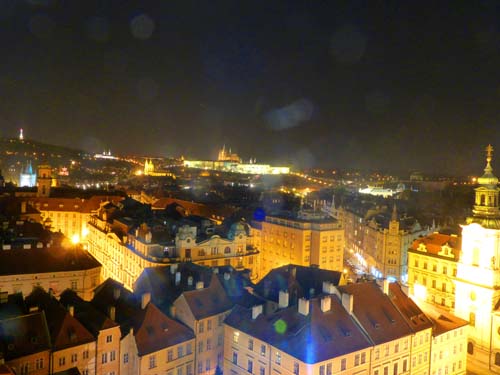
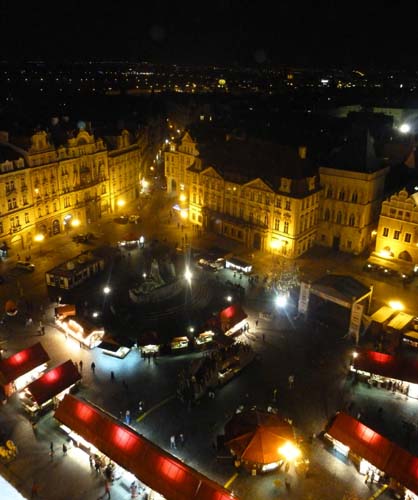
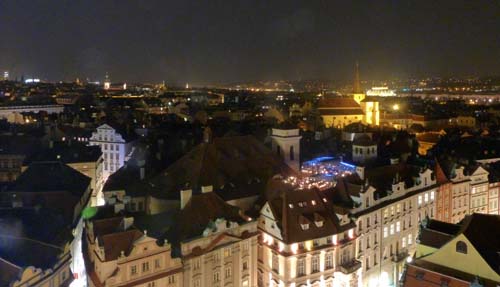
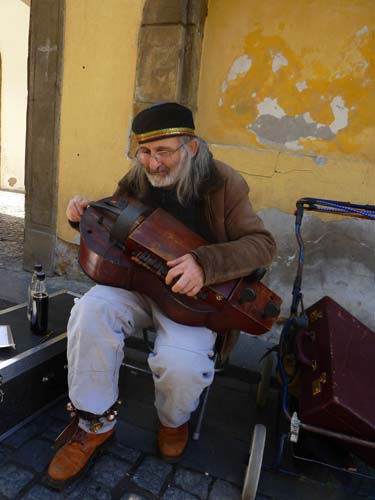
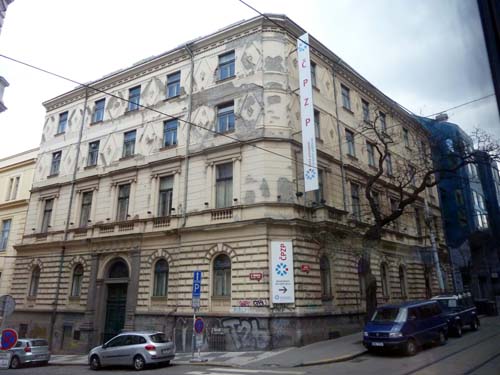
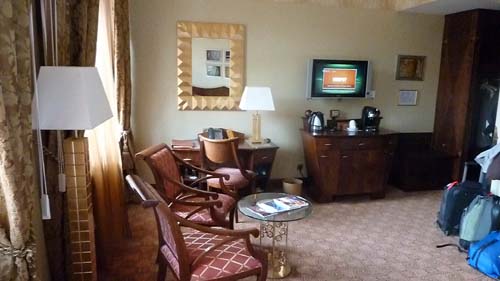
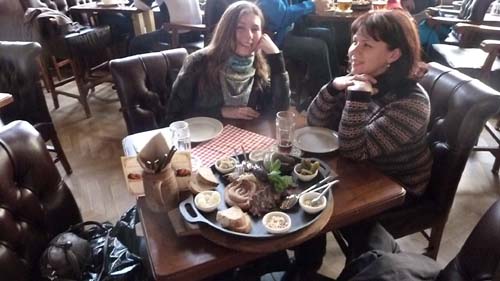
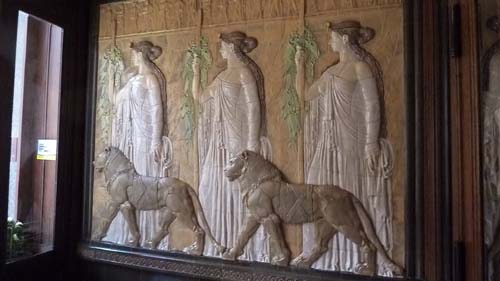
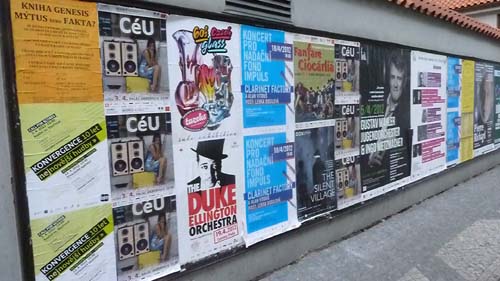
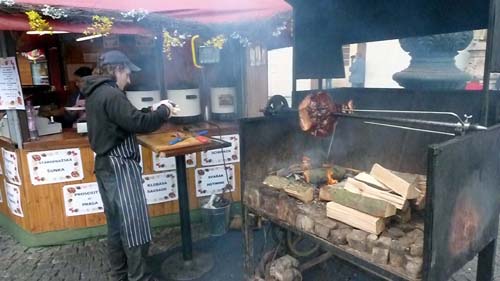
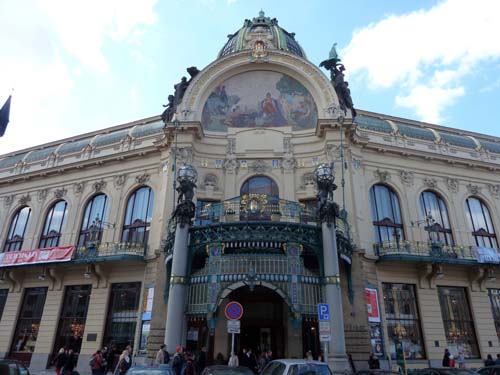
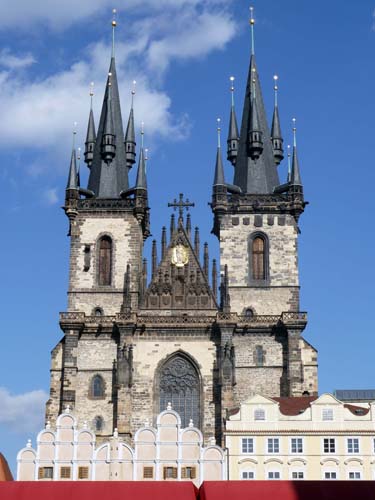
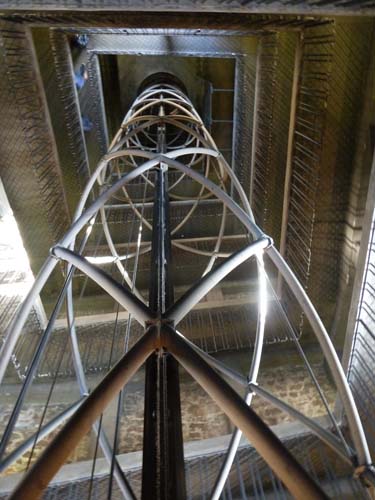
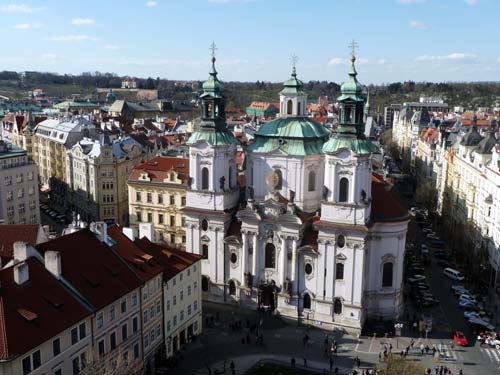
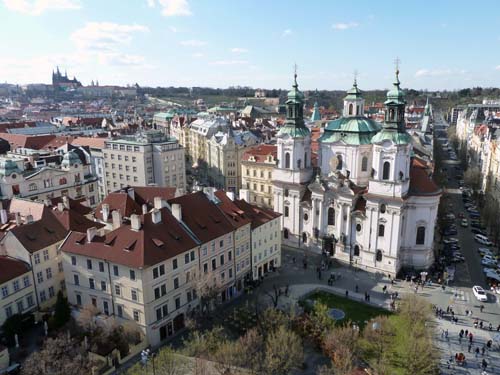
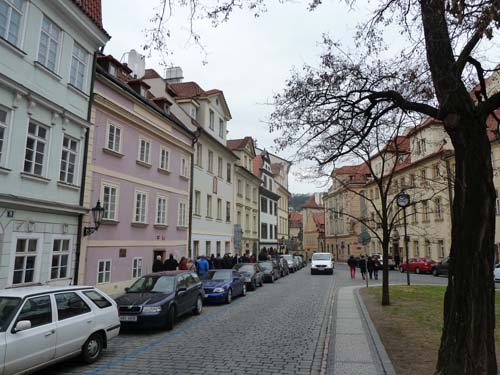
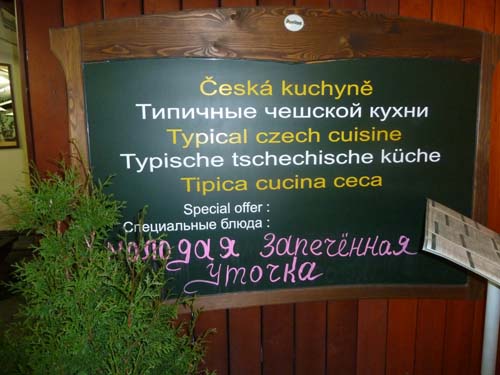
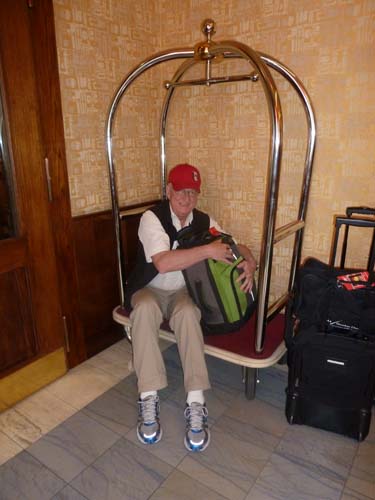
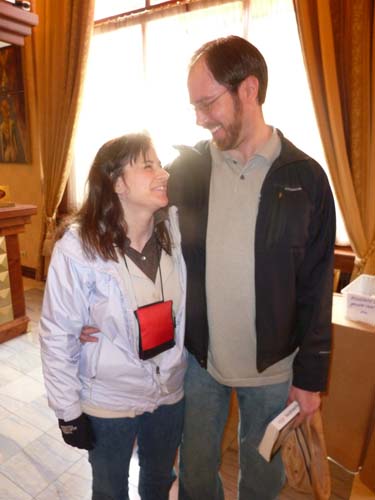
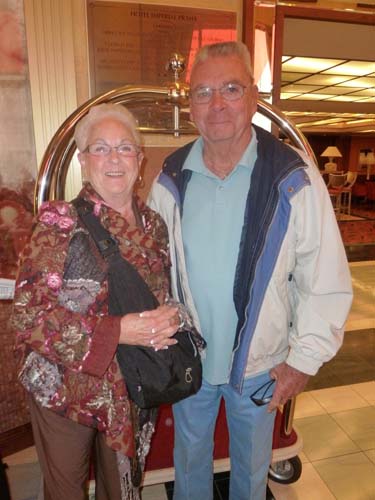
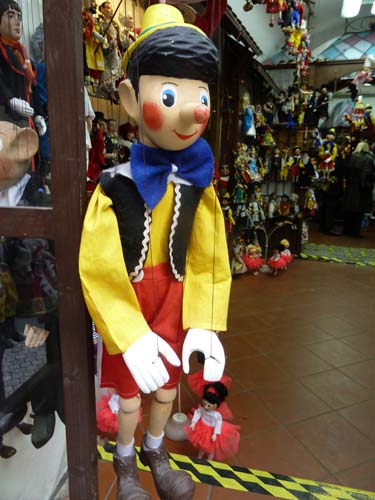
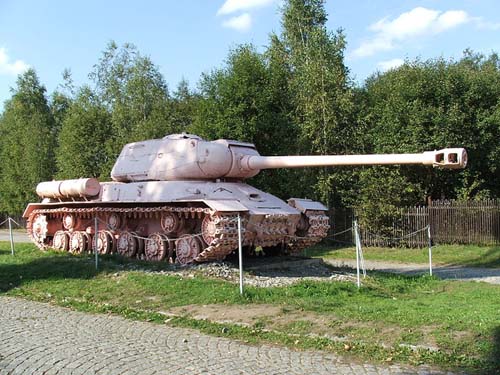
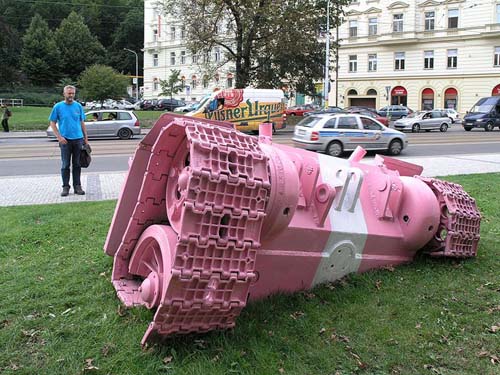

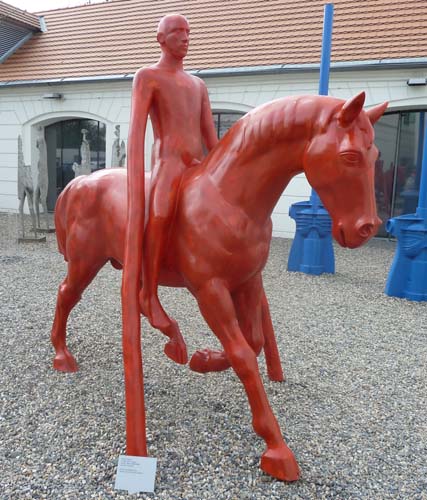
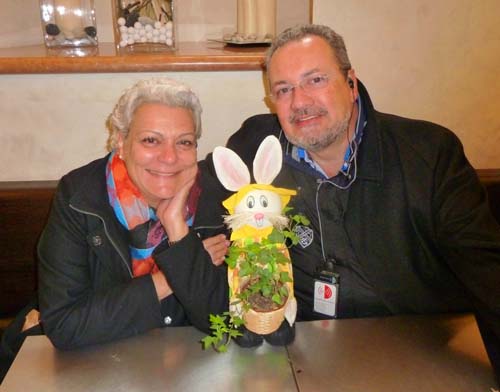
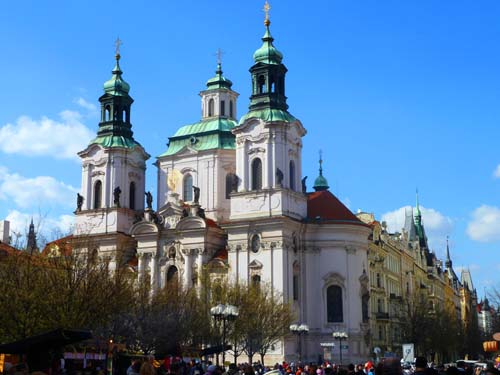
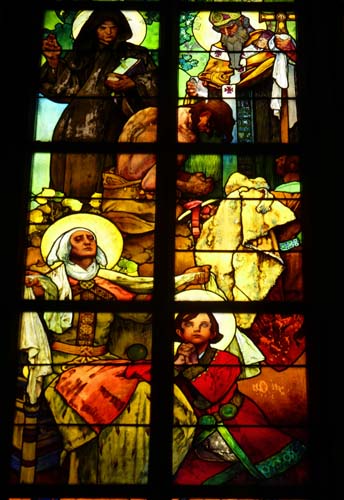
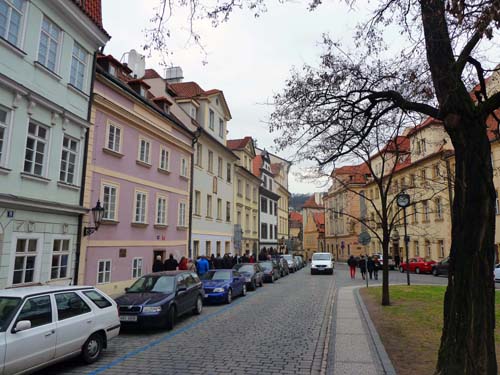
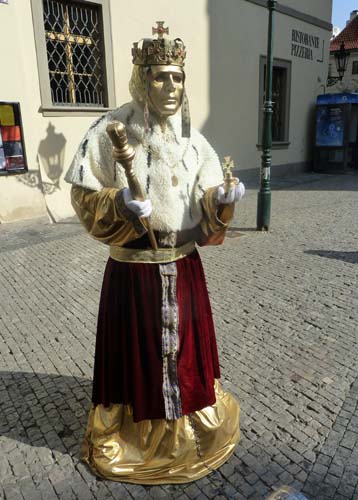
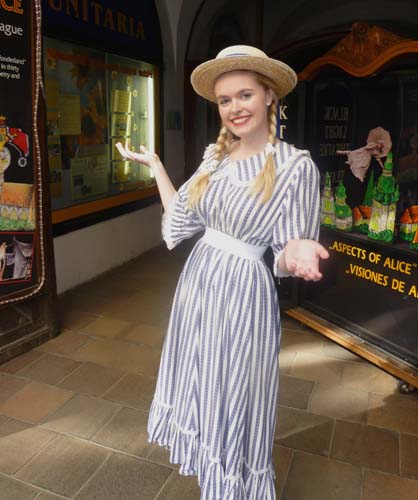
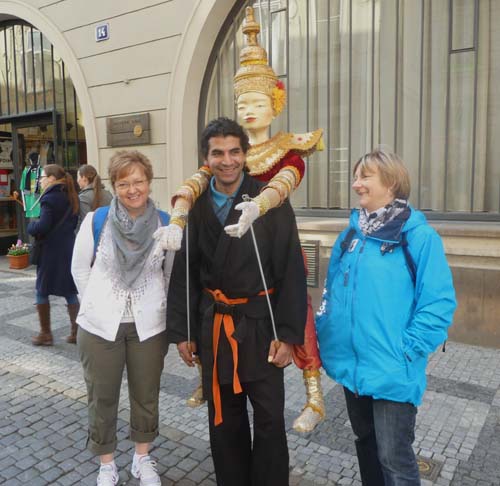
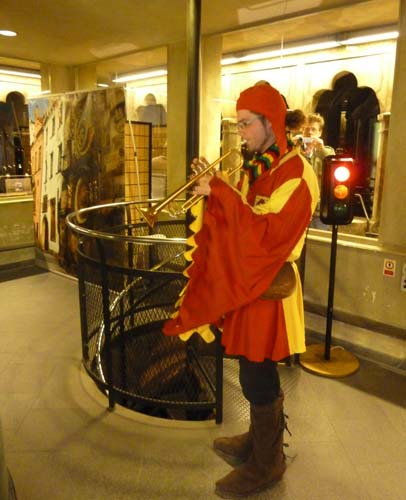
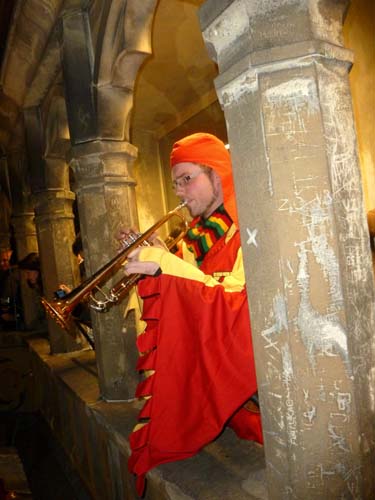
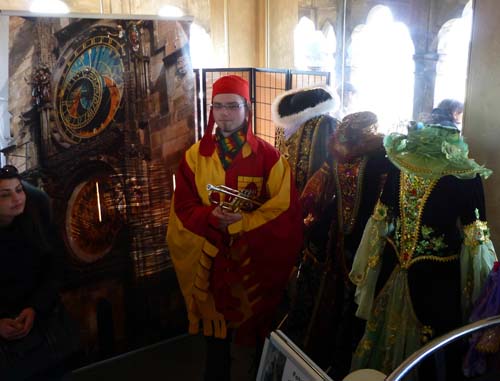
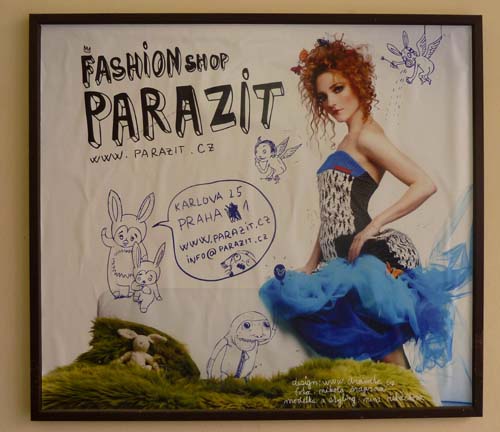
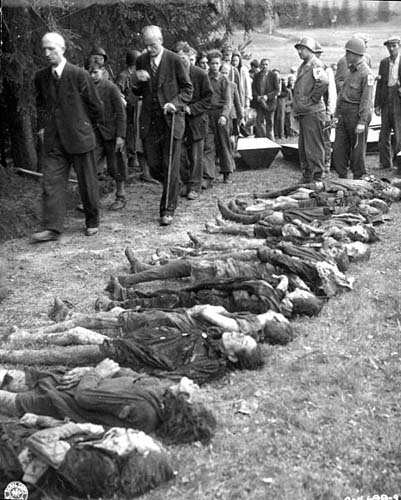
(837)
Tags: Communism, Czech Republic, Esther Dunn, Garth Dunn, Harold McNeill, Lynn McNeill, Nazi, Prague, Slovakia
Trackback from your site.
